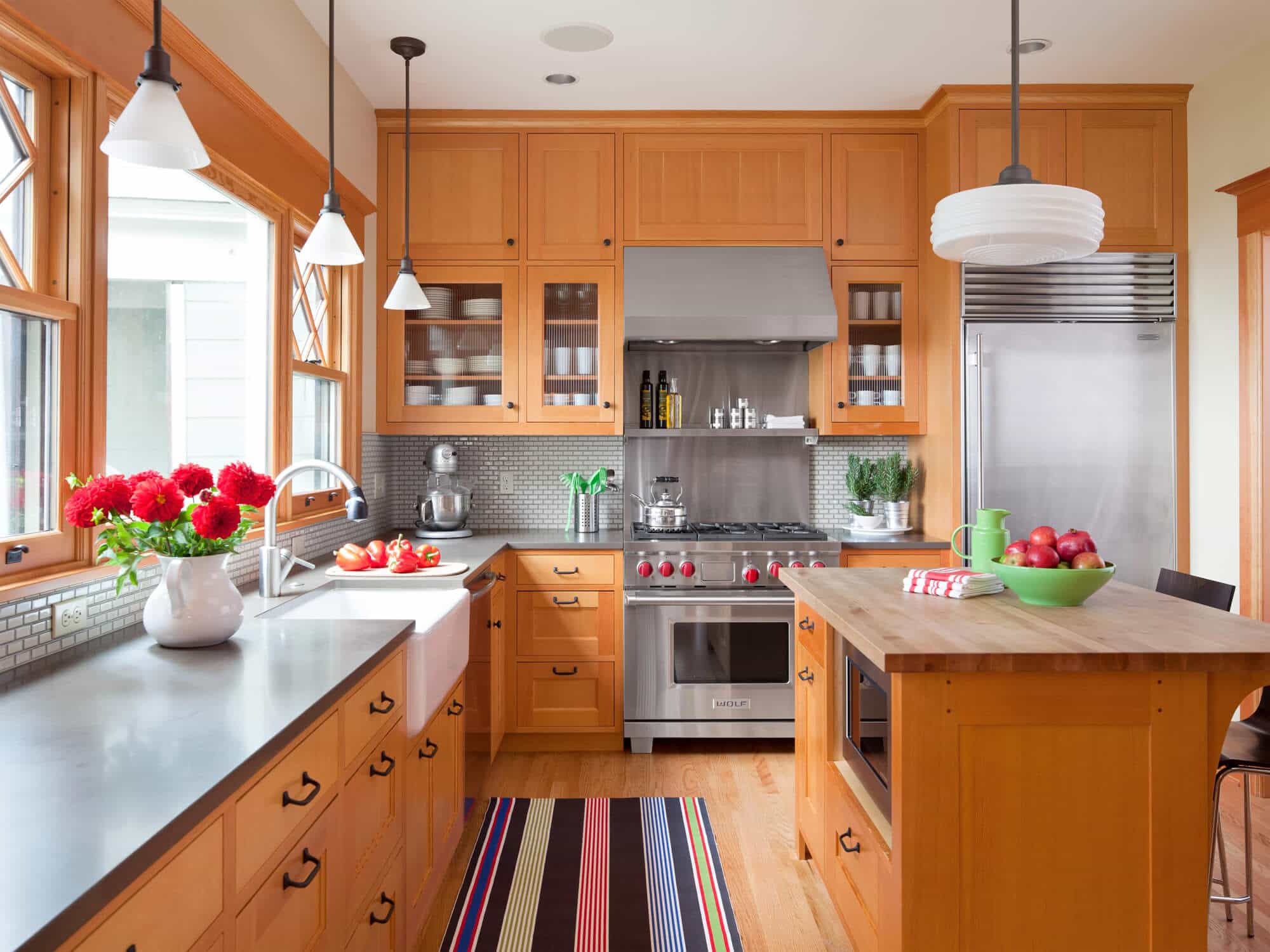Integrating Vintage Wood Kitchen Cabinets into Modern Homes

The enduring appeal of vintage wood kitchen cabinets lies in their timeless craftsmanship and inherent character. These cabinets, often boasting rich textures and unique details, offer a compelling contrast to the sleek minimalism often associated with contemporary kitchen design. Successfully integrating them requires a thoughtful approach, balancing the warmth and history of the vintage pieces with the clean lines and functionality of modern aesthetics.
Aesthetic Comparison and Blending Vintage and Modern Styles, Vintage wood kitchen cabinets
Vintage wood kitchen cabinets, with their intricate carvings, warm tones, and often distressed finishes, present a markedly different aesthetic from the contemporary preference for sleek, minimalist designs featuring flat-panel doors and streamlined hardware. Modern kitchens often prioritize functionality and a sense of spaciousness, using light colors and minimalist designs. The challenge lies in harmonizing these contrasting styles. A successful blend creates a space that is both stylish and inviting, showcasing the best of both worlds. This can be achieved through careful consideration of color palettes, countertop choices, and the selection of modern appliances that complement, rather than clash with, the vintage cabinets.
- Choose a complementary color palette: Pair the warm tones of the wood with neutral colors like white, gray, or beige on walls and backsplashes. Accent colors can be introduced through accessories and smaller details.
- Update hardware: Replacing outdated hardware with sleek, modern pulls or knobs can significantly modernize the look of the cabinets without sacrificing their charm. Consider brushed nickel, matte black, or polished chrome finishes.
- Incorporate modern appliances: Stainless steel appliances are a classic choice that complements most vintage styles. Consider integrating smart appliances for a seamless blend of old-world charm and modern technology.
- Balance texture and simplicity: The rich texture of the wood cabinets should be balanced with simpler, cleaner lines in other aspects of the kitchen design, such as countertops and backsplashes. Consider a simple, solid-color countertop.
- Highlight key features: Instead of trying to hide the vintage cabinets, showcase their unique character. Consider using strategic lighting to highlight interesting details such as carvings or unique hardware.
Vintage Cabinet Integration in Various Kitchen Layouts
The successful integration of vintage wood cabinets depends heavily on the kitchen’s layout, size, lighting, and overall color scheme. A small kitchen might benefit from lighter-colored cabinets or a strategic placement to maximize the sense of space. In larger kitchens, darker or more ornate cabinets can create a striking focal point. Natural light can enhance the beauty of the wood grain, while artificial lighting should be chosen to complement the overall ambiance.
| Kitchen Layout | Cabinet Integration | Considerations |
|---|---|---|
| L-shaped kitchen | Install vintage cabinets along one or two walls, using modern cabinets on the remaining wall to create a balance. | Ensure the modern cabinets complement the vintage style. Consider using a consistent countertop material throughout. |
| Galley kitchen | Use vintage cabinets on one side, and modern cabinets on the opposite side for a balanced look. | Careful planning is crucial in a galley kitchen to ensure sufficient storage and counter space. |
| U-shaped kitchen | Install vintage cabinets along two walls and modern cabinets on the third wall, or mix vintage and modern cabinets strategically. | This layout allows for a greater mix of styles. Ensure that the transition between styles is seamless. |
Kitchen Scene Examples
Farmhouse Style Kitchen
Imagine a sun-drenched kitchen with creamy white walls, exposed wooden beams, and vintage wood cabinets painted a soft, warm gray. The countertops are a butcher block style, adding to the rustic charm. A large farmhouse sink sits beneath a window, allowing natural light to flood the space. The lighting is a mix of recessed lighting and a charming pendant light above the island. Simple, wrought-iron hardware adorns the cabinets, adding a touch of elegance. A large wooden table sits in the center of the room, surrounded by mismatched vintage chairs.
Minimalist Modern Style Kitchen
This kitchen features crisp white walls and a sleek, minimalist design. The vintage wood cabinets are painted a clean white, their rich texture still subtly visible. The countertops are a smooth, polished concrete, offering a stark contrast to the cabinets’ texture. Modern stainless steel appliances are integrated seamlessly into the design. The lighting is a combination of recessed lighting and minimalist track lighting, creating a clean, functional atmosphere. Simple, brushed nickel hardware on the cabinets complements the modern aesthetic.
Transitional Style Kitchen
This kitchen balances the warmth of vintage wood cabinets with the clean lines of modern design. The cabinets are a medium-toned wood, complementing the light gray walls and white backsplash. The countertops are a quartz composite in a neutral tone. A mix of modern and vintage lighting fixtures creates a warm and inviting atmosphere. Modern stainless steel appliances are complemented by the classic beauty of the vintage cabinets. The hardware is a sleek, brushed brass, adding a touch of elegance and warmth. The overall effect is a sophisticated and timeless kitchen that effortlessly blends old and new.
